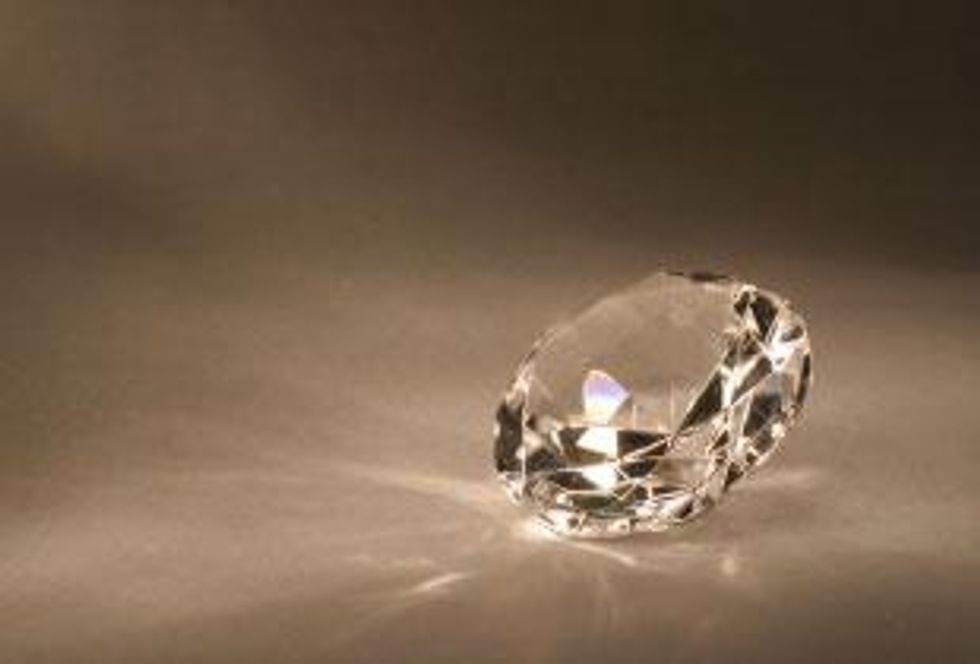Supply Shortages May Herald in era of Peak Diamond’
De Beers Chief Gareth Penny has been vocal about supply shortfalls, and a lack of prospects to keep up with increasing demand for diamonds. With the Chinese diamond market exploding and decreasing output from some of the largest mining operations in the world, is the market heading towards “Peak Diamond.”
By Michael Montgomery—Exclusive to Diamond Investing News
Marketing strategy or market reality? Diamond giant De Beers has been outspoken recently, saying that long term diamond supply is in decline. Call it ‘Peak Diamond’. The idea is much like the ‘peak oil’ theory that asserts the world is currently running out of oil, and consequently, prices will shoot into the stratosphere.De Beers, whose financial statements have been hurting since the economic downturn, has announced that it will cut production from 48 million carats in 2008, down to 40 million in 2011. In 2009, De Beers lost $743 million as it slashed production to just 24 million carats.
The move may be a marketing ploy from the company that created the engagement diamond frenzy with arguably the most famous marketing slogan of all time, ‘A diamond is forever.’ De Beers has been creating demand for their luxury goods worldwide with this slogan. They have moved their campaign to China where tradition reigns supreme.
Customarily, the Chinese gifted jade and gold as tokens of marital bliss, but now diamonds are becoming the symbol of love. As a result, China is now the world’s second largest consumer of diamonds. “If you look back 20 years there was no diamond acquisition culture in China . . . But today in Beijing, Shanghai, and Guangzhou there is an obvious launchpad: 40 percent of brides in those cities are getting diamond engagement rings. It was zero 15 years ago,” stated Gareth Penny, the Chief Executive of De Beers.
However, the company may be speaking the truth, and looking to extend the life of their mines by cutting production. “Between 1980 and 1999 the global diamond supply doubled as huge new mines like Argyle in Australia and Diavik in Canada came on stream… Since then nothing comparable has been found, except for the Marange diamond field in Zimbabwe, which could be the next bonanza deposit if economic stability returned to the country. The cold war-era diamond stockpiles held by the US and the old De Beers cartel have also been sold off,” reported William McNamara, for the Financial Times.
Reports from the Diavik mine do not look promising either, as the mine has moved from an open pit to an underground operation. This is a bid to extend the life of the dwindling mine till 2020. “We’ve already had the T-bone steak and we’ve already had the prime rib roast of this particular animal. We now have to move on to the hamburger and the chuck steak,” said Bob Gannicott, chairman and chief executive officer of Harry Winston Diamond Corp.
Whether this is a marketing ploy or not, one thing is for certain, the cut in production from the world’s largest mines will drive up the costs of stones. “Assuming the move moderated production, rough diamond prices could rise by at least 5 percent per year for the next five years,” according to Des Kilalea, analyst at RBC Capital Markets.
As dire as De Beers statements may sound there is good news for future supply. There are new mines coming into production and other promising exploration projects worldwide.
Future Diamond Prospects
One of the largest prospects for future supply is Stornoway Diamond Corporation’s [TSE:SWY] Renard project, with a potential for 20 to 40 million carats. The main benefit from Canadian stones is the political stability of the country, as opposed to ‘conflict or blood diamonds’ from fields such as the Marange field in Zimbabwe. A more complete report of the Renard Project was reported here on Diamond Investing News last month.
Canadian-based Lucara Diamonds [CVE:LUC][PINK:LUCRF] is exploring its AK6 project in Botswana. “The new resource update estimates an indicated resource of just over 51 million tonnes at an average grade of 22 carats per hundred tonnes (cpht) and an average modeled diamond value of US$194 per carat, and an inferred resource of approximately 20 million tonnes at an average grade of 19 cpht and an average modeled diamond value of US$183 per carat,” stated a press release from the company.
“AK6 and Renard are the two most promising kimberlite projects that are currently in development, with AK6 scheduled to come on stream in late 2011 and Renard after 2013. Their timing may be perfect as demand is slowly increasing and the global economic recovery is helping the market return to its former long-term outlook, wherein demand easily outstrips supply,” says Des Kilalea, analyst for RBC Capital Markets.
Peregrine Diamonds [TSE:PGD] has also released new information on their Nanuq diamond project, located in Nunavut, Canada. The company has started it $3.5 million exploratory program. “The project has great exploration potential and our three diamondiferous kimberlite discoveries there in 2007 give us optimism that large kimberlites . . . We are very fortunate to have the diamond exploration one-two punch of our Chidliak and Nanuq projects, two of the most promising diamond districts discovered worldwide since 2007,” remarked Brooke Clements, Peregrine’s President.
